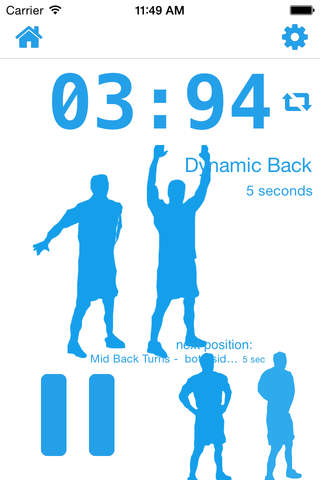
5 Minute Warm Up: Pre-Workout routines PRO
The warm-up aims to:
-prepare the body and mind for the activity
-increase the bodys core temperature
-increase heart rate
-increase breathing rate.
It is very important to warm up the body before exercising. This aids the performer in preparing psychologically for exercise, reducing the chance of joint and muscle injury.
Warm up exercises prepare the body for exercising by increasing the blood flow to the muscles allowing them to loosen up, which can raise the flow of oxygen to the muscle cells. Doing this gradually increases the bodys temperature. This then increases the speed and force of muscular contractions, because nerve impulses travel faster at higher body temperatures, and muscles become less stiff or more pliable.
They also help to gradually increase the heart rate and ensure that the demand made on the circulatory and metabolic systems is gradual as well. In a safe and gradual way they allow blood to be diverted away from other parts of the body such as the digestive system to the muscles being exercised. This initial part of your exercise session helps to improve neural function and co-ordination, protect major joints as it takes time to increase the supply of lubricating synovial fluid and to thicken the articular cartilages – the body’s shock absorbers.
The warm ups intensity should cause perspiration but not cause fatigue. The type of warm up needs to be appropriate for the activity planned. It also needs to be appropriate to the age range and fitness level of the participants, usually lasting for 5-10 minutes in duration.
The following examples cover a warm up:
• walking or jogging to increase the body’s temperature
• dynamic stretches to reduce muscle stiffness
• specific stretches for muscles that will be used during exercises
So in warming up thoroughly, we are preparing the body and the mind for the more energetic demands to come.



